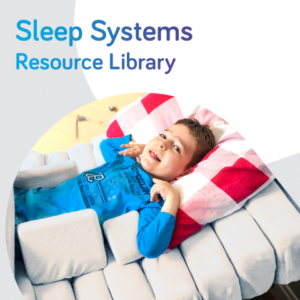Access the Medifab library of helpful resources to assist therapists and families who are being introduced to sleep systems as part of a 24 hour postural care routine. Resources include product selection guide, example usage, tips and tricks, and Medifab’s comprehensive sleep system directory and family workshop booklet.
part of a 24 hour postural care routine. Resources include product selection guide, example usage, tips and tricks, and Medifab’s comprehensive sleep system directory and family workshop booklet.
See Medifab’s Sleep Directory catalogue, an extremely useful resource for therapists and parents. You will find some powerful material at the beginning of the book to facilitate discussions with families about 24 hour postural care and also a 24 hour clock diagram on the back page. This is for you to copy and complete for your clients. This diagram has been found to be a very graphic way to communicate to carers and families just how important it is to be cognisant of the various postures the individual is subjected to throughout their day and night.
Medifab Sleep System Resources for families
Below are a number of useful resources for families who are being introduced to sleep systems as part of a 24 hour postural care routine. Medifab also have a Powerpoint Presentation available specifically for therapists to present to families. To obtain your copy click here.
Helpful Information from the UK
Other resources which should appear on this page?
Email [email protected] with your suggested resources to add here to share with other therapists and families.










